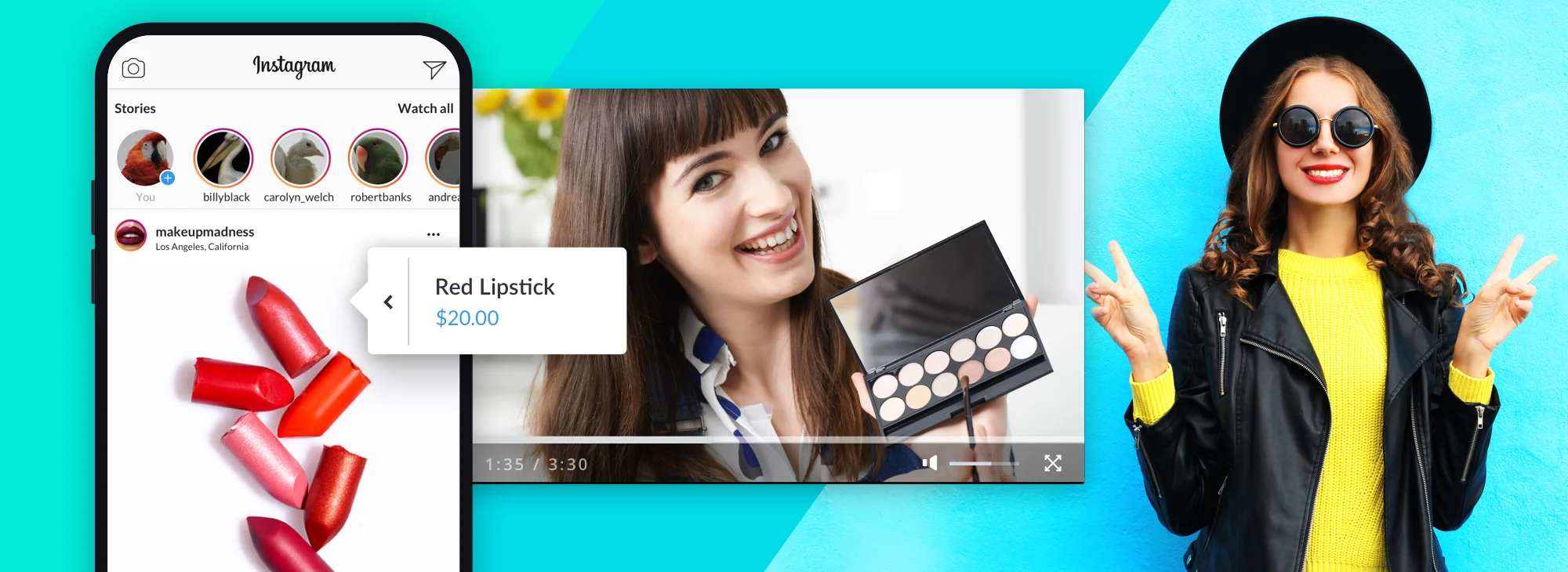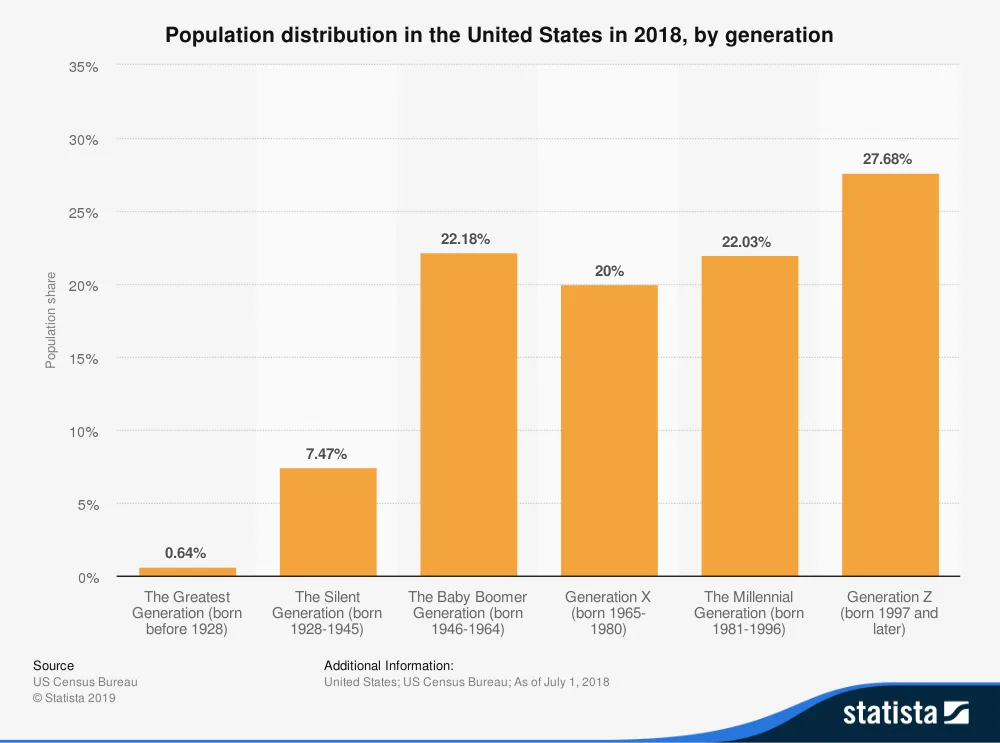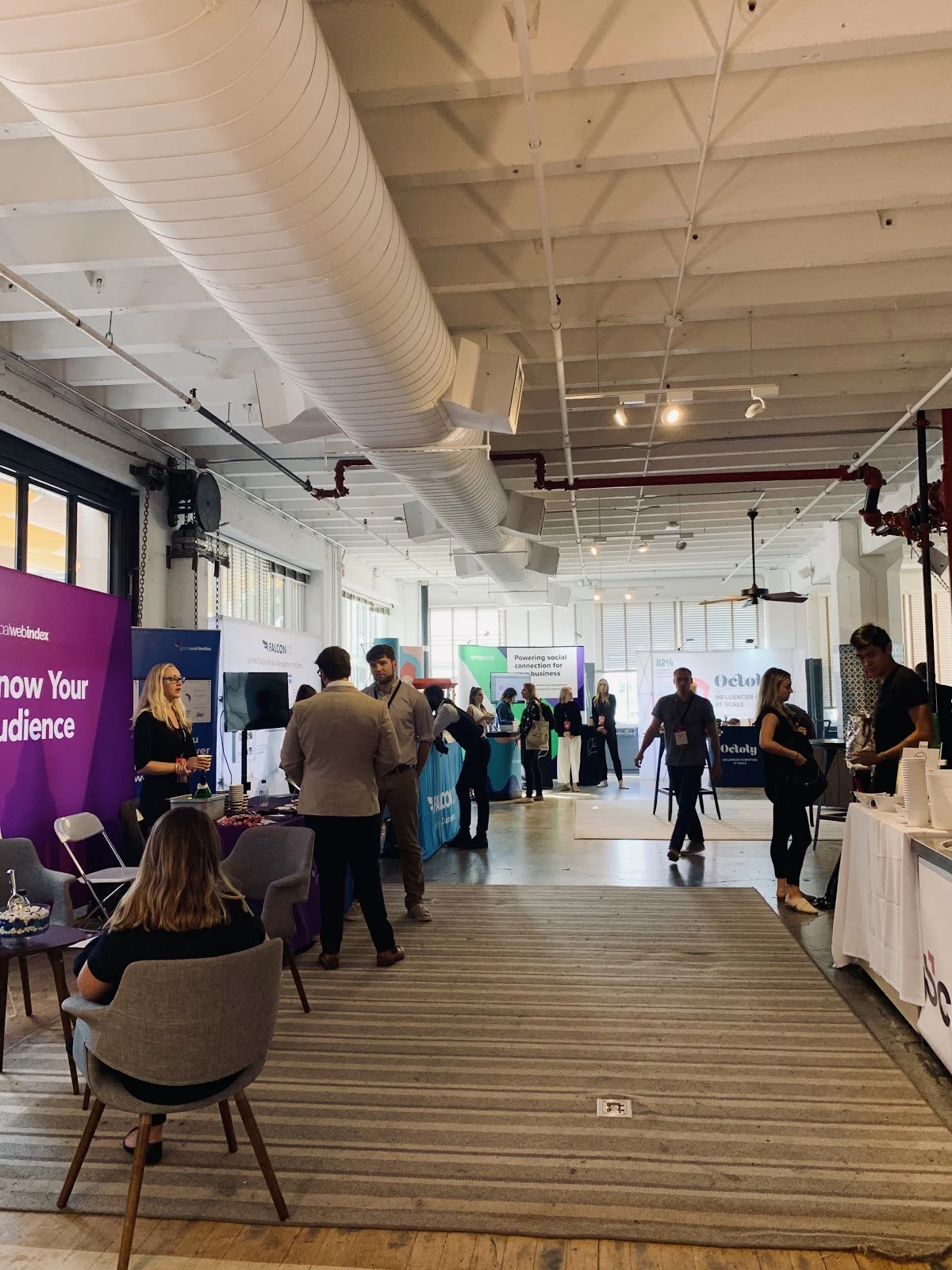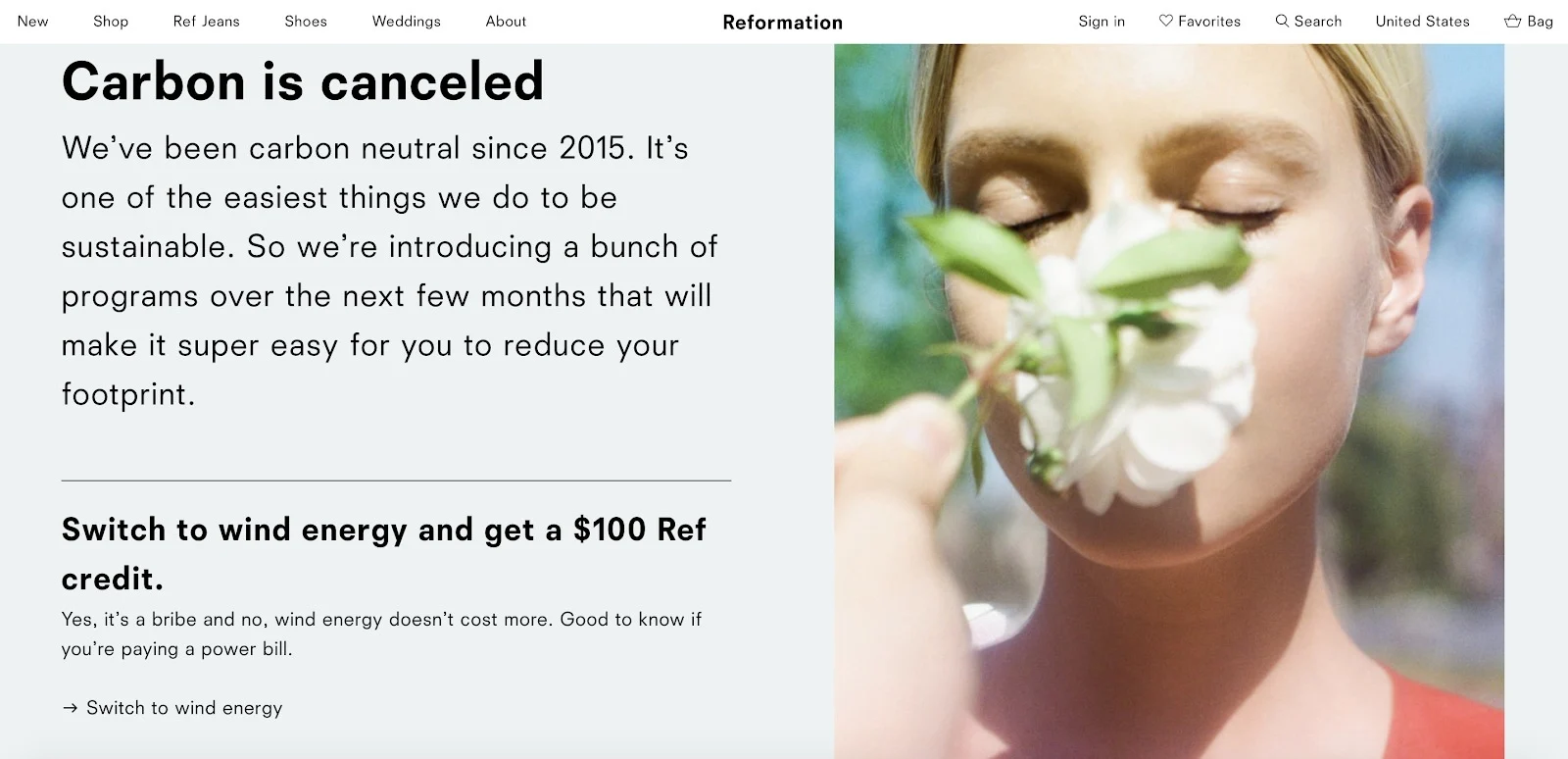Marketing to Gen Z: Your Guide To Converting The Most Politically Active, Environmentally Conscious and Influencer-Driven Generation Yet


Marketing to Gen Z: Your Guide To Converting The Most Politically Active, Environmentally Conscious and Influencer-Driven Generation Yet
Get The Print Version
Tired of scrolling? Download a PDF version for easier offline reading and sharing with coworkers.
A link to download the PDF will arrive in your inbox shortly.
As a younger Millennial, I’ll be honest — I thought I knew everything there was to know about Gen Z. It wasn’t until I attended YMS 2019 a few weeks back that I learned times have changed (and I am older than I thought).
As you are planning for future ecommerce success, understanding what drives Gen Z purchases is key. After all, in 2018, the generation made up more than 27% of the U.S. population.

Attending the conference helped me learn wonders and insights about the new generation — and, most valuable, how to market, engage, and convert them. Between sessions with marketing leaders from brands like Disney, YSL, and Marriott, it became evident that businesses must look forward to the next generation.


Photos from YMS 2019 in Brooklyn, NY.
Embracing Gen Z begins with understanding what they value and what motivates them to engage. The Youth Marketing Strategy conference highlighted these answers — and even helped me brainstorm actionable content ideas, too.
Who is Generation Z?
Generation Z (commonly referred to as Gen Z) is defined by those who are born between 1996 and 2009.
While they share similar traits to previous generations (like Millennials), Gen Z is amplifying change by advocating for causes they are passionate about via social media platforms. And, if brands want to tap into the population, they’ll need to pay attention to what the generation values.
You’ve probably heard that you need to prepare a strategy to appeal to Gen Z, but why? Because the generation has become a massive commerce opportunity thanks to its high buying power, spending power, and brand loyalty.
Gen Zers spend $143B and influence over $333B in household income yearly. — Melanie Rodriguez, VP at Octoly
Let’s break down the Gen Z audience by their lifestyle, content preferences, and the ways the new generation is making an impact.
Digital natives with a healthy passion for advocacy and change.
Gen Z are digital natives, born with the internet and the rise of smartphones.
While older generations sometimes ridicule them for being obsessed with everything digital, they are actually more aware than other generations of the impact technology has on their lives.
Per Voxburner’s 2019 United States Youth Trends Report, “81% of Gen Z worry about how much time they spend with technology, with smartphone usage the most common concern, ahead of screen time and social media usage …the online and physical worlds are inherently interconnected, and tools such as social media and video platforms are not purely entertaining them, but also making them more informed, connected and empowered.”
One of the new acronyms I learned at the conference was JOMO — the joy of missing out — a polar opposite to the Millennial-coined acronym FOMO — the fear of missing out. Gen Z is opting to spend more time at home, and it’s inevitably affecting how and where they spend their money.
An example of this contrast is alcohol consumption. While Millennials and Gen Xers have been widely criticised for binge drinking, Gen Z has become known as the sober generation. Don’t believe it? Voxburner found that only 14% of Gen Z drinks every week while a vast 46% opt for sobriety.
Honestly, the wine lover in me was surprised, too. But keep in mind — many members of Gen Z are still not of legal age to drink in the United States.
This brings us to the rise of health consciousness, which Gen Z — a more risk-averse and well-informed generation — has embraced with open arms. While the main driver to leading a healthier lifestyle is to improve their well-being, it’s also a result of rising activism for topics like animal rights and climate change. This has sparked Gen Z adoption of diets like veganism.
As the most diverse generation, it’s no surprise that Gen Z is the most politically active and environmentally conscious population to date. This generation is inspired by young activists, like Greta Thunberg, who are determined to make present-day changes in their culture.
In fact, 77% of Gen Z have taken some form of action for a cause they believe in, and 23% have even boycotted a brand. With more options for where they can shop, Gen Z is keen to only shop with brands that share their personal values.
For inspiration, look to brands like Reformation, for example, that are honing in on their rich values of sustainability.

Communicating your brand values — and living up to them — is a strong way to win over Gen Z customers.
The rise of the Instagram influencer.
Influencers have completely transformed the way Gen Z shops and interacts with brands — and, quite honestly, they’ve changed content marketing, personalisation, and digital marketing strategy efforts as we know it.
https://www.instagram.com/p/Byi09rzH132/
The line between influencers and consumers is becoming more blurred by the minute. More brands continue to invest marketing dollars to work with anyone from an online celebrity to a nano- or micro-influencer. But, when it comes to who is an influencer in the Gen Z community, only 21% self-identify.
While influencers use a variety of digital platforms (like Facebook or TikTok), Instagram has risen to the top. So much so that 16% of Gen Z choose to eat at a certain restaurant and 18% choose to attend a specific event – all because it’s ‘instagrammable’.
Young people — like Jared Newman, a 22-year-old participant in Voxburner’s Youth Trends Report — are more aware of the effects of these marketing efforts on the younger audience:
“I think that the biggest impact of the rise of influencers is an expectation that commerce penetrates every aspect of a person’s life, whether it’s getting married and sponsoring a venue, or travelling somewhere.
Nowadays, you take photos, because the expectation is that the experience will no longer be enough, and it’s the monetisation and the selling of the experience that matters.
We are at a point where we look at everything thinking about how it would look in a photo, which is a very different way of seeing the world.”
Change is at the forefront for the next generation.
It’s no secret that Gen Z is the most digital-savvy population. But, having a pretty website is no longer enough to seal the deal.
Gen Z expects a very high quality, simple, and eye-catching user experience from each brand they engage with. And with the increased use of mobile devices, there is a higher preference for apps than web-browser experiences.
When it comes to discovery, Gen Z are using new technology to find new products, brands, and experiences. Specifically, Voxburner found that, of Gen Z, 90% have used a voice assistant (like Apple’s Siri, Amazon’s Alexa, or Google Home) with 70% of them using it at least once a week.
A tool used by Gen Z that has captured the eyes of ecommerce brands is visual search. Most of them use the tool to find a product to purchase. A recent example of this is Amazon’s partnership with Snapchat (a widely used social media app amongst Gen Z) which enables users to search for Amazon products by taking a photo in the app.
By keeping your brand front of mind for Gen Z, you can craft an ecommerce strategy that marries tech innovation and consumer relationships.
5 Tips For Marketing to Gen Z
Now we have a clear understanding of who Gen Z is, what they value, and how they are moving the needle when it comes to ecommerce marketing. How can ecommerce businesses absorb that knowledge and turn it into an actionable ecommerce strategy?
Here are five tips for how to make the most of Gen Z consumer relationships while boosting conversion and brand awareness.
1. Share your values.
Gen Z has let us know — loud and clear — that they are passionate about making a change and fighting for the values they believe in.
Share the mission and values of your brand, or take it a step further and partner with a charity or cause your brand is passionate about.
Take direct-to-consumer (DTC) shoe company Rothy’s as an example. In October 2019, the company teamed up with the Breast Cancer Research Foundation for National Breast Cancer Awareness Month to gift a pair of pink shoes to those impacted by the illness.

Gen Z consumers are more likely to shop with your brand when it gives them the opportunity to support one of their passions. Connect with new customers by facilitating a stronger relationship between you and your users.
2. Checkout and shopping on Instagram.
Let’s be honest — if you want to capture the Gen Z market, having an Instagram account is absolutely necessary.
Instagram understands its role and impact in the ecommerce market, so they’ve worked with tech partners like BigCommerce to prioritise the enablement of commerce experiences within the app.
With shopping on Instagram, users can click on product detail information, right from your content, that will take them to your website.
And to make it even better, with the recent launch of checkout on Instagram, your brand can take part in the beta testing of users converting on your products directly within the Instagram app!

Moral of the story — be where your Gen Z customers are.
3. Capitalise on experiences.
78% of Gen Z choose to spend money on experiences versus buying something tangible.
Woah. 78%? Yep, that’s a big number.
The truth is, Gen Z is facing online advertising fatigue — and they can easily spot a disingenuous ad or a poor attempt from a brand trying to be relevant to the Gen Z population.
Blame it on the Instagram movement or the social-media obsessed, but Gen Z loves to share experiences — and, quite honestly, it has become the norm.
An experience is a commodity to share, and customers need to be there in person to participate. Plus, on average, according to the YMS conference, brands see a 45% increase in online traffic after launching a brick-and-mortar store. So, it’s a win-win for all involved.
Brands like Glossier have capitalised on experience-driven traffic by launching pop-up stores in cities around the globe. Their most recent opening took place in Austin, Texas, and drew a heavy amount of offline and online traffic. They plan to open their next pop-up in London, England.
https://www.instagram.com/p/B393y8fhc8g/
Whether you are a direct-to-consumer (DTC) brand or looking to diversify your consumer engagement, try to host an offline event or pop-up experience or begin to offer buy online pick up in store (BOPIS) to your customers.
4. Up your promotional strategy.
While they often get the reputation of being spenders, Gen Z are actually more of the saving type.
Here’s a quick look at what I learned at YMS 2019 regarding Gen Z’s relationship with finances:
4 out of 5 always know how much money is in their bank account.
62% agree that living with parents after college is worth it in order to save money.
6 out of 10 say they manage money better than their parents did.
6 out of 10 would like to take a class on how to manage money.
81% of Gen Z plan to make more money than their parents.
They are often using apps to save money (e.g., Rakuten, RetailMeNot).
While most of Gen Z does plenty of research on a product before they convert, savings are their #1 motivator to buy.
Offering free shipping or exclusive discounts can quickly convert Gen Z consumers.Your brand can also try to communicate promotions in a cross-channel strategy to better reach and expand your customer base.
5. Work with influencers.
65% of Gen Z have purchased something based on an influencer’s recommendation.
As an influencer myself — I couldn’t leave out this essential Gen Z marketing tip.
Influencers have become a cultural phenomenon for Gen Z. They are a trusted source to consumers and are even seen as a virtual friend to some.
For tips on how to create a successful influencer campaign, check out my Instagram Influencer Marketing post on the BigCommerce blog.
Executive Summary
Gen Z is impacting commerce worldwide. It’s time to include the demographic in your marketing strategy so you can expand your reach, boost conversion, and increase brand awareness.
Whether its implementing new features on your ecommerce website or rolling out new digital marketing campaigns, remember to prioritise consumer relationships.
To reach Gen Z, try including the following in your ecommerce marketing strategy:
Share your values,
Use shopping and checkout on Instagram,
Capitalise on experiences,
Up your promotional strategy, and
Work with influencers.
The faster brands can create relationships with Gen Z, the sooner they’ll find success in their ecommerce strategy.
